Jiří Navrátil
A resource-constrained stochastic scheduling algorithm for homeless street outreach and gleaning edible food
Mar 15, 2024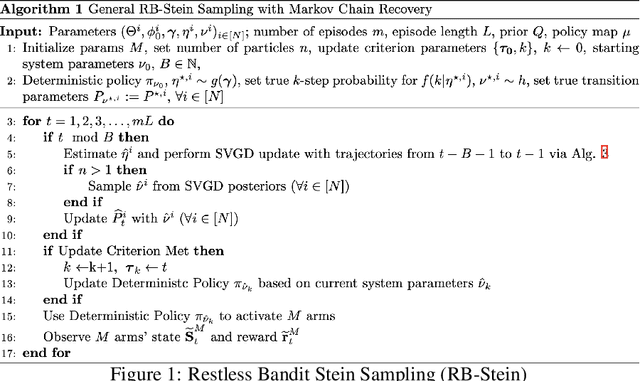
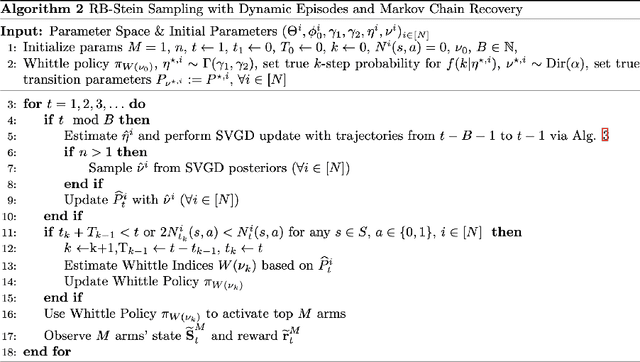
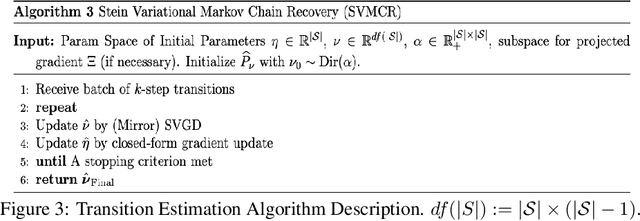
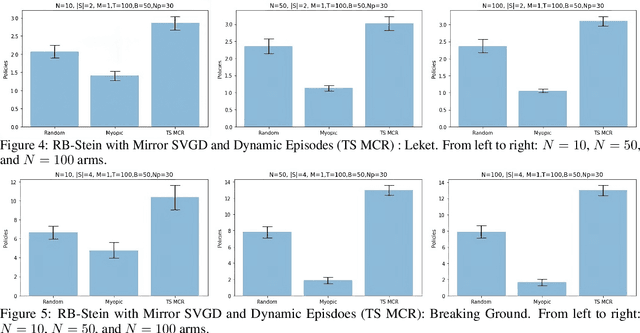
Abstract:We developed a common algorithmic solution addressing the problem of resource-constrained outreach encountered by social change organizations with different missions and operations: Breaking Ground -- an organization that helps individuals experiencing homelessness in New York transition to permanent housing and Leket -- the national food bank of Israel that rescues food from farms and elsewhere to feed the hungry. Specifically, we developed an estimation and optimization approach for partially-observed episodic restless bandits under $k$-step transitions. The results show that our Thompson sampling with Markov chain recovery (via Stein variational gradient descent) algorithm significantly outperforms baselines for the problems of both organizations. We carried out this work in a prospective manner with the express goal of devising a flexible-enough but also useful-enough solution that can help overcome a lack of sustainable impact in data science for social good.
Learning Granger Causality from Instance-wise Self-attentive Hawkes Processes
Feb 06, 2024Abstract:We address the problem of learning Granger causality from asynchronous, interdependent, multi-type event sequences. In particular, we are interested in discovering instance-level causal structures in an unsupervised manner. Instance-level causality identifies causal relationships among individual events, providing more fine-grained information for decision-making. Existing work in the literature either requires strong assumptions, such as linearity in the intensity function, or heuristically defined model parameters that do not necessarily meet the requirements of Granger causality. We propose Instance-wise Self-Attentive Hawkes Processes (ISAHP), a novel deep learning framework that can directly infer the Granger causality at the event instance level. ISAHP is the first neural point process model that meets the requirements of Granger causality. It leverages the self-attention mechanism of the transformer to align with the principles of Granger causality. We empirically demonstrate that ISAHP is capable of discovering complex instance-level causal structures that cannot be handled by classical models. We also show that ISAHP achieves state-of-the-art performance in proxy tasks involving type-level causal discovery and instance-level event type prediction.
Anomaly Attribution with Likelihood Compensation
Aug 23, 2022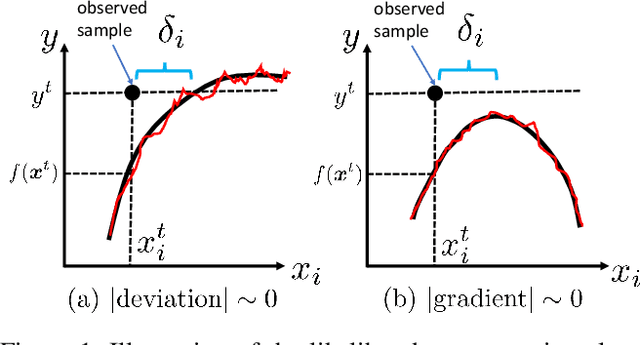
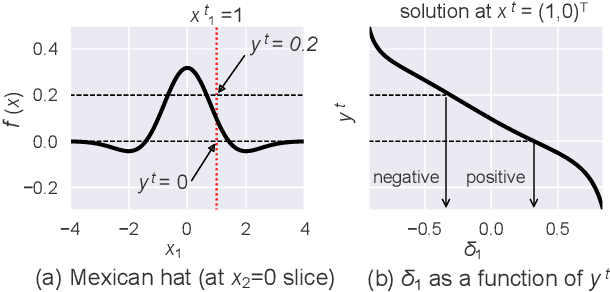
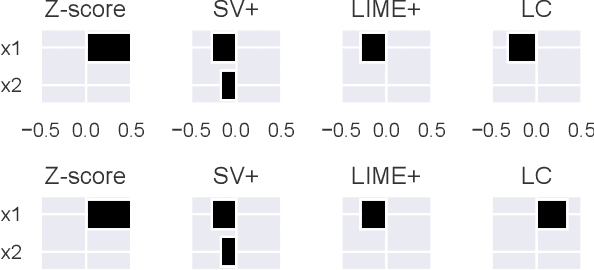
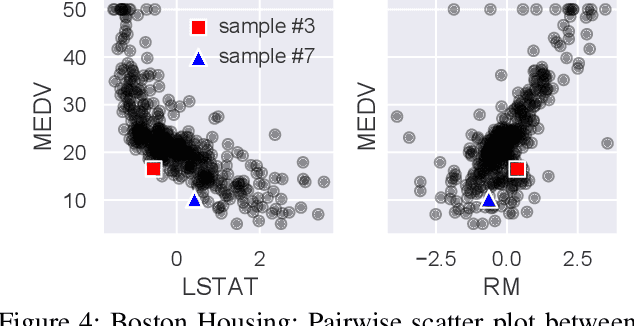
Abstract:This paper addresses the task of explaining anomalous predictions of a black-box regression model. When using a black-box model, such as one to predict building energy consumption from many sensor measurements, we often have a situation where some observed samples may significantly deviate from their prediction. It may be due to a sub-optimal black-box model, or simply because those samples are outliers. In either case, one would ideally want to compute a ``responsibility score'' indicative of the extent to which an input variable is responsible for the anomalous output. In this work, we formalize this task as a statistical inverse problem: Given model deviation from the expected value, infer the responsibility score of each of the input variables. We propose a new method called likelihood compensation (LC), which is founded on the likelihood principle and computes a correction to each input variable. To the best of our knowledge, this is the first principled framework that computes a responsibility score for real valued anomalous model deviations. We apply our approach to a real-world building energy prediction task and confirm its utility based on expert feedback.
Confidence Scoring Using Whitebox Meta-models with Linear Classifier Probes
May 14, 2018
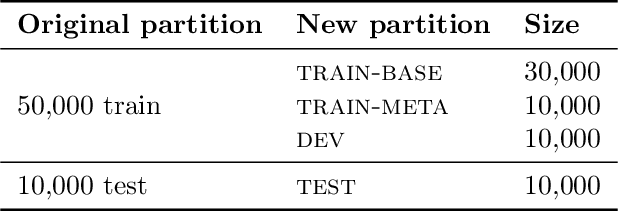

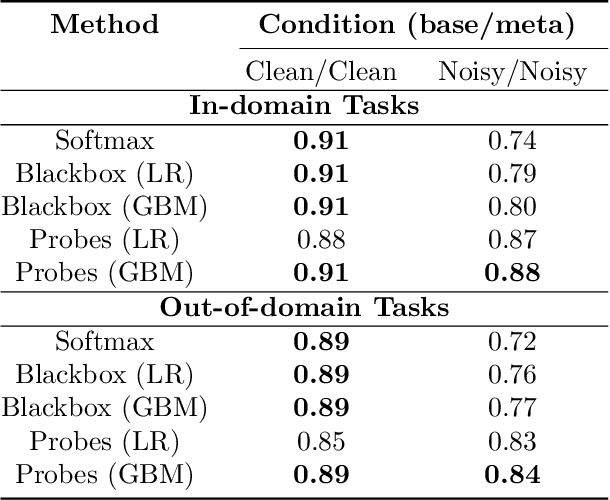
Abstract:We propose a confidence scoring mechanism for multi-layer neural networks based on a paradigm of a base model and a meta-model. The confidence score is learned by the meta-model using features derived from the base model -- a deep multi-layer neural network -- considered a whitebox. As features, we investigate linear classifier probes inserted between the various layers of the base model and trained using each layer's intermediate activations. Experiments show that this approach outperforms various baselines in a filtering task, i.e., task of rejecting samples with low confidence. Experimental results are presented using CIFAR-10 and CIFAR-100 dataset with and without added noise exploring various aspects of the method.
 Add to Chrome
Add to Chrome Add to Firefox
Add to Firefox Add to Edge
Add to Edge